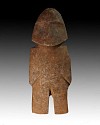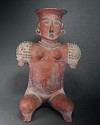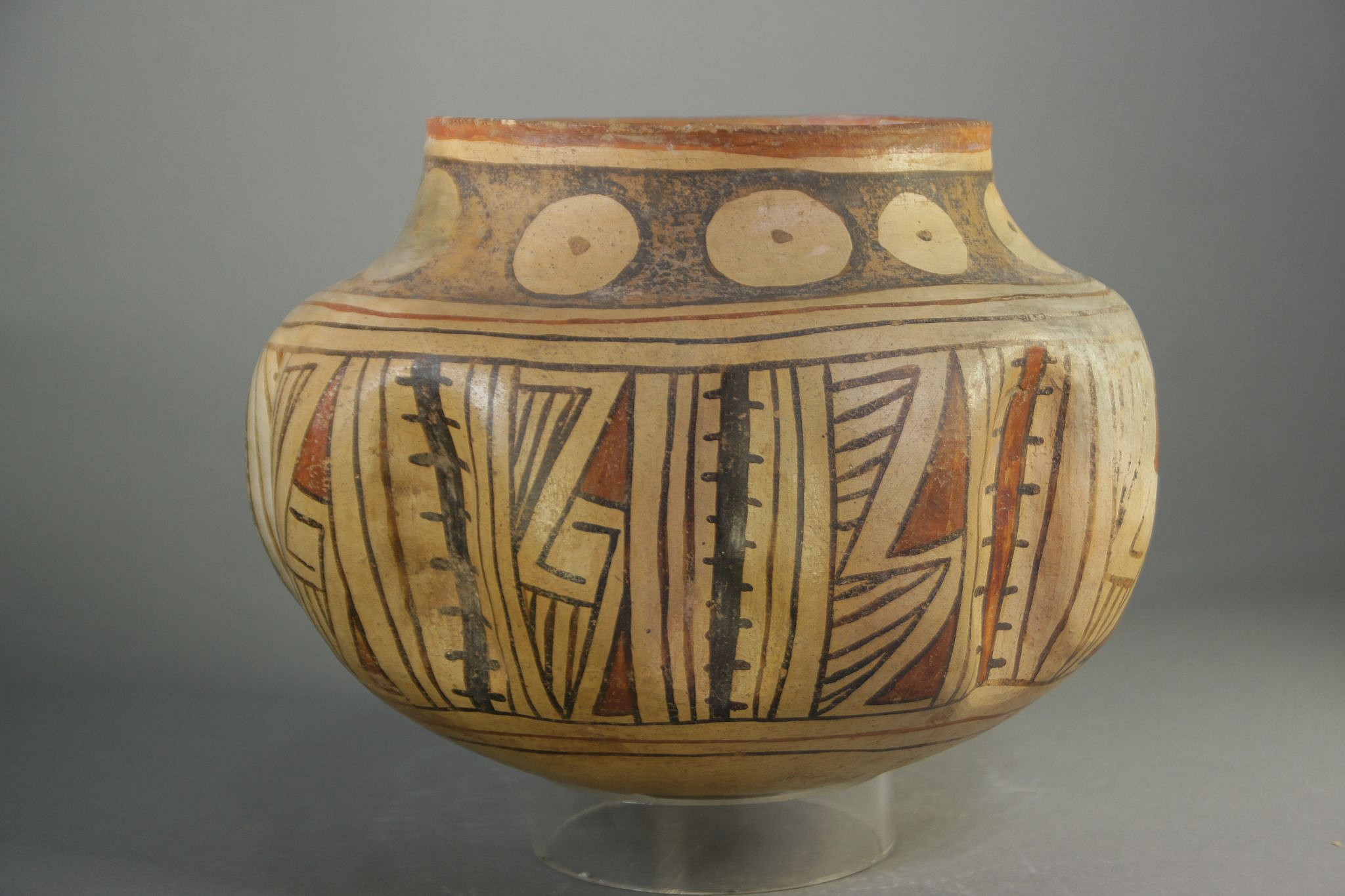




Mexico, Casas Grande Fluted Ceramic Vessel with Geometric Designs
This unusual ceramic bowl has nine fluted sections separated by symbolic cacti imagery. The bowl is painted with red and black geometric designs on a beige ground. On the bottom are three large concentric black lines. It has a tapered neck that is decorated with nine beige circles on a black ground. Each circle has a central black dot, which believe symbolizes an aerial view of a cactus. This vessel originates from Casas Grande, a site located in the Mexican state of Chihuahua, along the Casas Grande River and South of the US Puebloan ruins. A good reference is “Casa Grandes and the Ceramic Art of the Ancient Southwest†by Richard Townsend, published by the Art Institute of Chicago.
The bowl is in good condition with one crack on the bottom restored and a small hole on one of the fluted sections.
Period: Mexico, Casas Grande Classic Period c. AD 1250 - 1475
Media: Ceramic
Dimensions: H. 6" x W. 8"
Price Upon Request
n6012
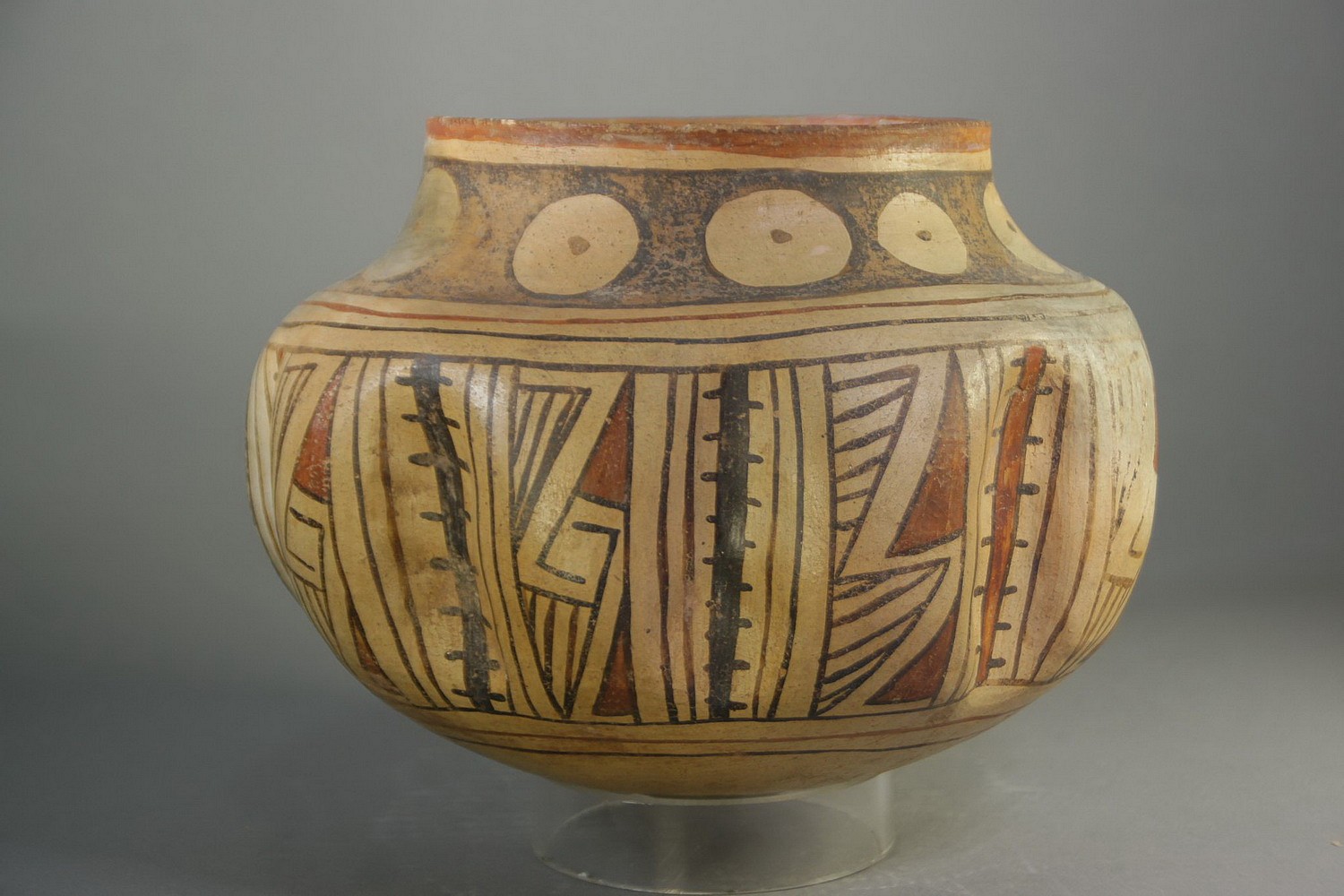




Mexico, Casas Grande Gadrooned Ceramic Vessel with Geometric Designs
This unusual ceramic bowl has nine fluted sections separated by symbolic cacti imagery. The bowl is painted with red and black geometric designs on a beige ground. On the bottom are three large concentric black lines. It has a tapered neck that is decorated with nine beige circles on a black ground. Each circle has a central black dot, which symbolizes an aerial view of a cactus. This vessel originates from Casas Grande, a site located in the Mexican state of Chihuahua, along the Casas Grande River and South of the US Puebloan ruins. A good reference is “Casas Grandes and the Ceramic Art of the Ancient Southwest†by Richard Townsend, published by the Art Institute of Chicago. The bowl is in good condition with one crack on the bottom restored and a small hole on one of the fluted sections. All parts original.
Period: Mexico, Casas Grande Classic Period c. AD 1250 - 1475
Media: Ceramic
Dimensions: H. 6" x W. 8"
$2,900
n2046
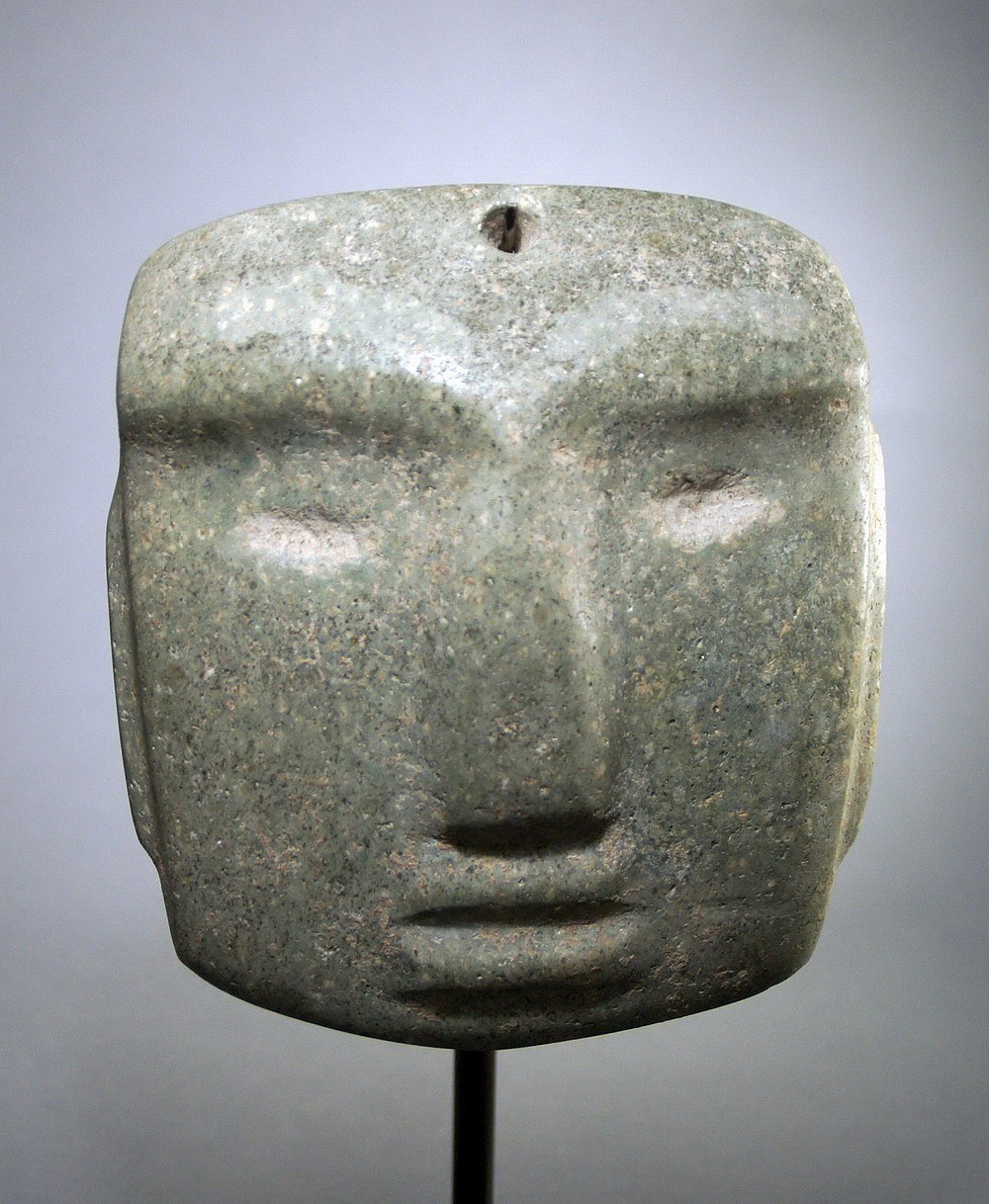







Mexico, Chontal Green Stone Mask with eyebrows
Classic Chontal style mask with unusual depiction of the eyebrows, which are etched into the stone. Similar masks are illustrated in CHONTAL: ANCIENT STONE SCULPTURE FROM GUERRERO MEXICO, page 59, A, B, C. & page 60. There are strong root marks all over.
Period: Mexico, Chontal middle phase, Guerrero, c. 500 - 100 BC
Media: Stone
Dimensions: Width: 6 1/4" x Height 7"
$12,000
N5021
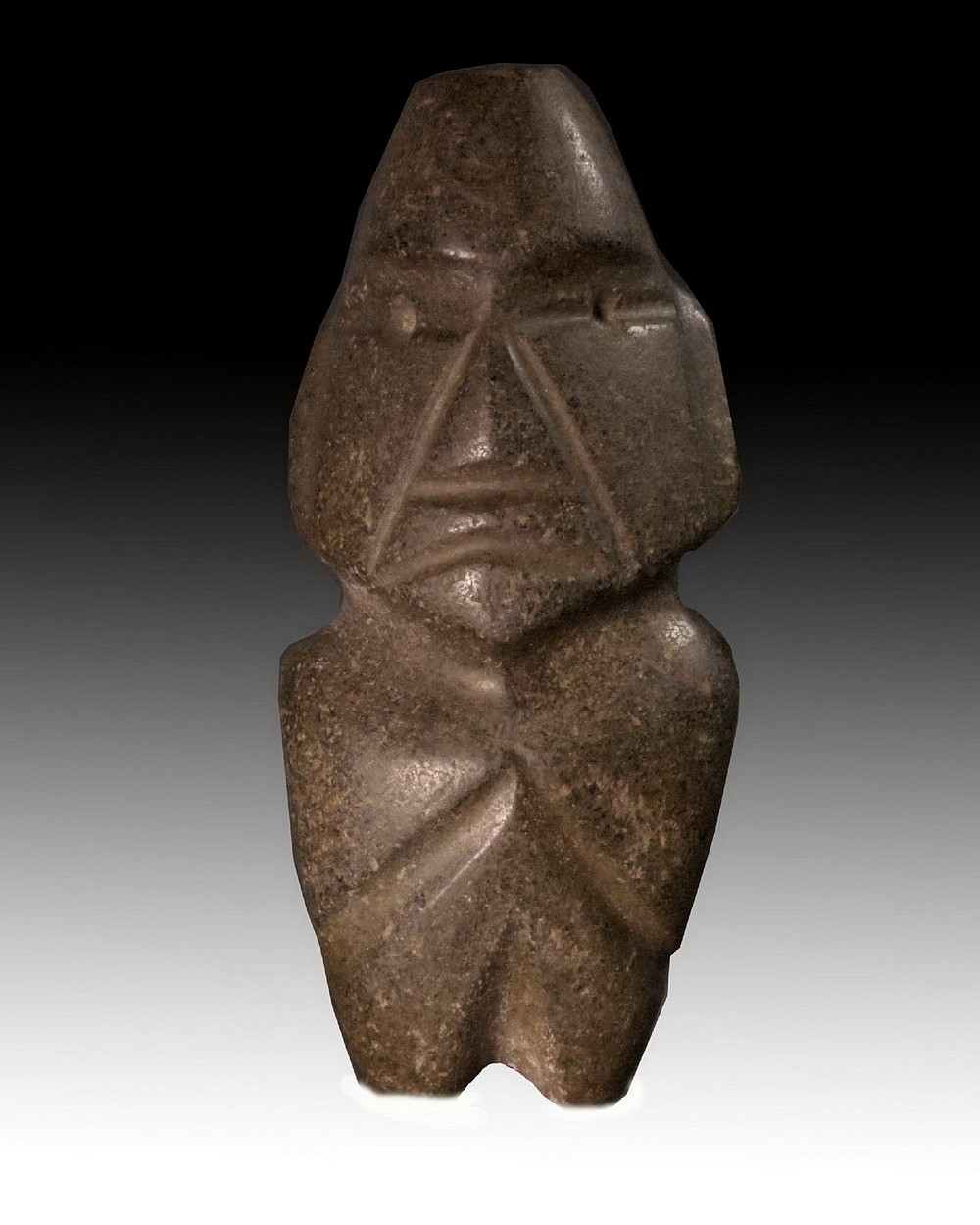





Mexico, Classic Brown Stone Mezcala Figure of the M8 Type
This hand-held stone figure fits perfectly in the palm of the hand and bears a distinctive facial expression with round eyes and a triangular frowning mouth. The figure was created using the string-sawing technique and is made of a greenish grey stone with earth brown striations. It was highly polished. The figure has its arms to the side, represented by carved grooves, and linear carved face, which are both characteristics of Type M10 Mezcalas. The representation of human figures played an important role in Mezcala culture, including in rituals and burial sites. However, most of these figures, were used for utilitarian purposes as celts or chisels. For a reference see the Primitive Museum of Art's MEZCALA STONE SCULPTURE: THE HUMAN FIGURE, p.22-23, and MEZCALA: ANCIENT STONE SCULPTURE FROM GUERRERO MEXICO, by Carlo Gay and Frances Pratt. Ex. Gallery Hana-Tokyo, prior to 1970.
Period: Mexico, Mezcala, Guerrero, c. 1200 - 300 BC
Media: Stone
Dimensions: H: 5 in. x 2.33 in.
Price Upon Request
n5057
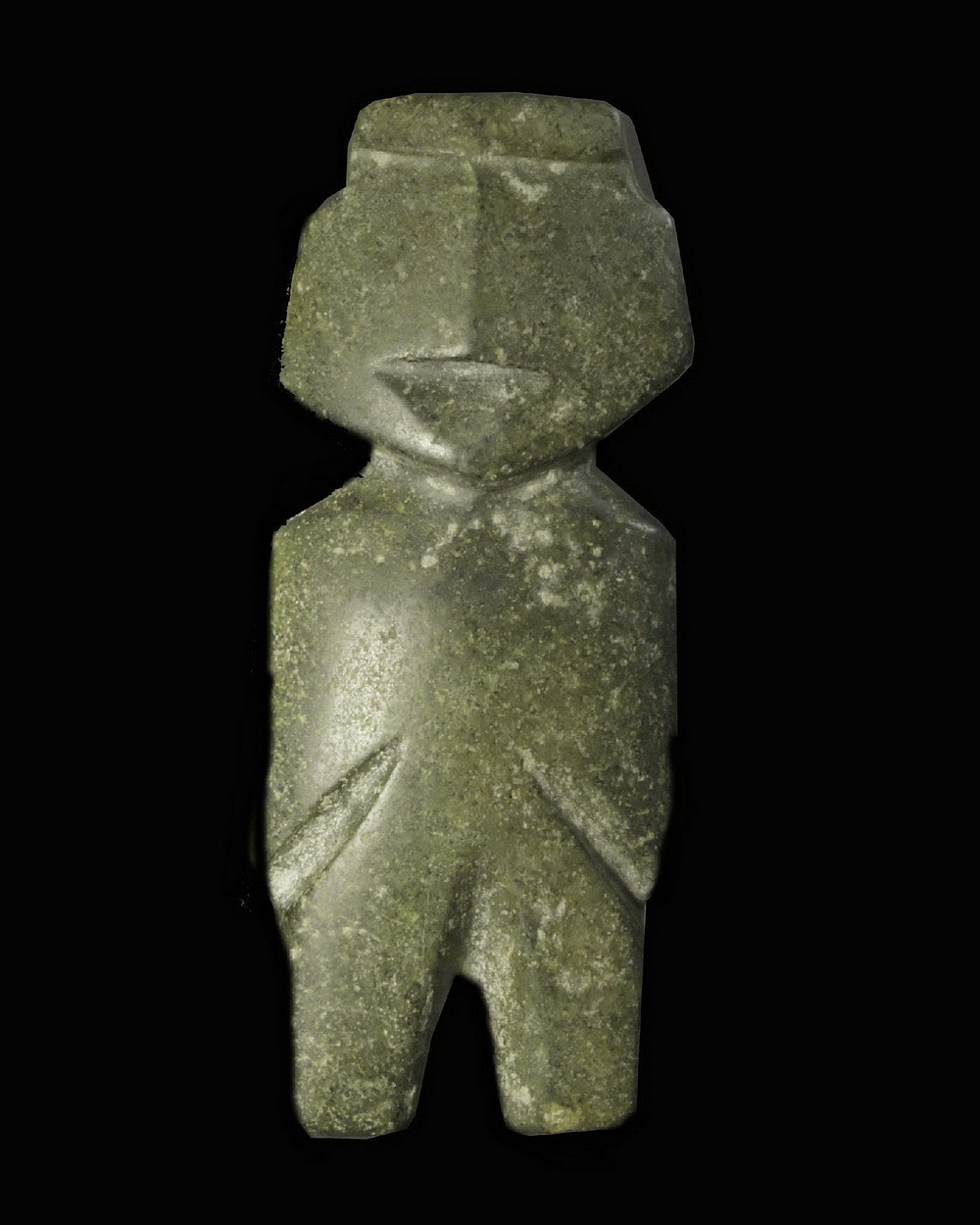





Mexico, Classic Greenish Grey Stone Mezcala Figure of the M8 Type
This solid, hand-held stone figure fits perfectly in the palm of the hand. The figure was created using the string-sawing technique and is made of a mottled greenish-grey stone with tiny even flecks of blue- black color evenly speckled throughout. The figure has its arms to the side, represented by carved grooves, which is a classic characteristic of Type M8 Mezcalas. The representation of human figures played an important role in Mezcala culture, including in rituals and burial sites. However, most of these figures, were used for utilitarian purposes as celts or chisels. For a reference see the Primitive Museum of Art's MEZCALA STONE SCULPTURE: THE HUMAN FIGURE, p.22-23, and MEZCALA: ANCIENT STONE SCULPTURE FROM GUERRERO MEXICO, by Carlo Gay and Frances Pratt, plate 67. Ex. Gallery Hana-Tokyo, prior to 1970.
Period: Mexico, Mezcala, Guerrero, c. 1200 - 300 BC
Media: Stone
Dimensions: H: 5 in. x W: 2 in.
$6,000
n5055
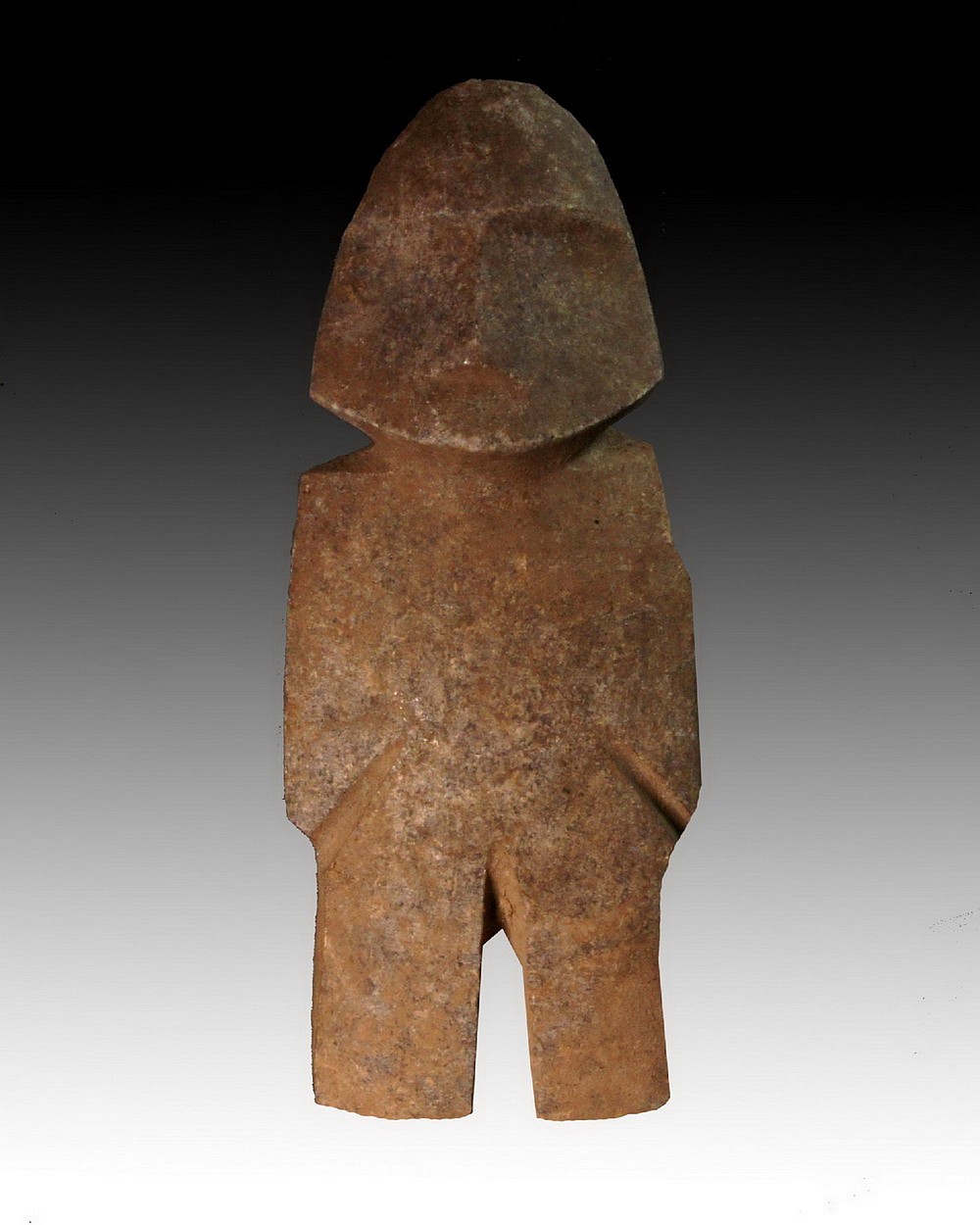




Mexico, Classic Grey Stone Mezcala Figure of the M10 Type
This mysterious hand-held stone figure fits perfectly in the palm of the hand and bears a serene facial expression with open mouth as if speaking. The figure was created using the string-sawing technique and is made of a dense grey stone infused with sand and miniature black striations. The figure has its arms to the side, represented by carved grooves, and simple, abstracted face, which are a classic characteristics of Type M10 Mezcalas. The representation of human figures played an important role in Mezcala culture, including in rituals and burial sites. However, most of these figures, were used for utilitarian purposes as celts or chisels. For a reference see the Primitive Museum of Art's MEZCALA STONE SCULPTURE: THE HUMAN FIGURE, p.22-23, and MEZCALA: ANCIENT STONE SCULPTURE FROM GUERRERO MEXICO, by Carlo Gay and Frances Pratt, plate 37. Ex. Gallery Hana-Tokyo, prior to 1970.
Period: Mexico, Mezcala, Guerrero, c. 1200 - 300 BC
Media: Stone
Dimensions: H: 5 in. x w: 2 in.
Price Upon Request
n5056
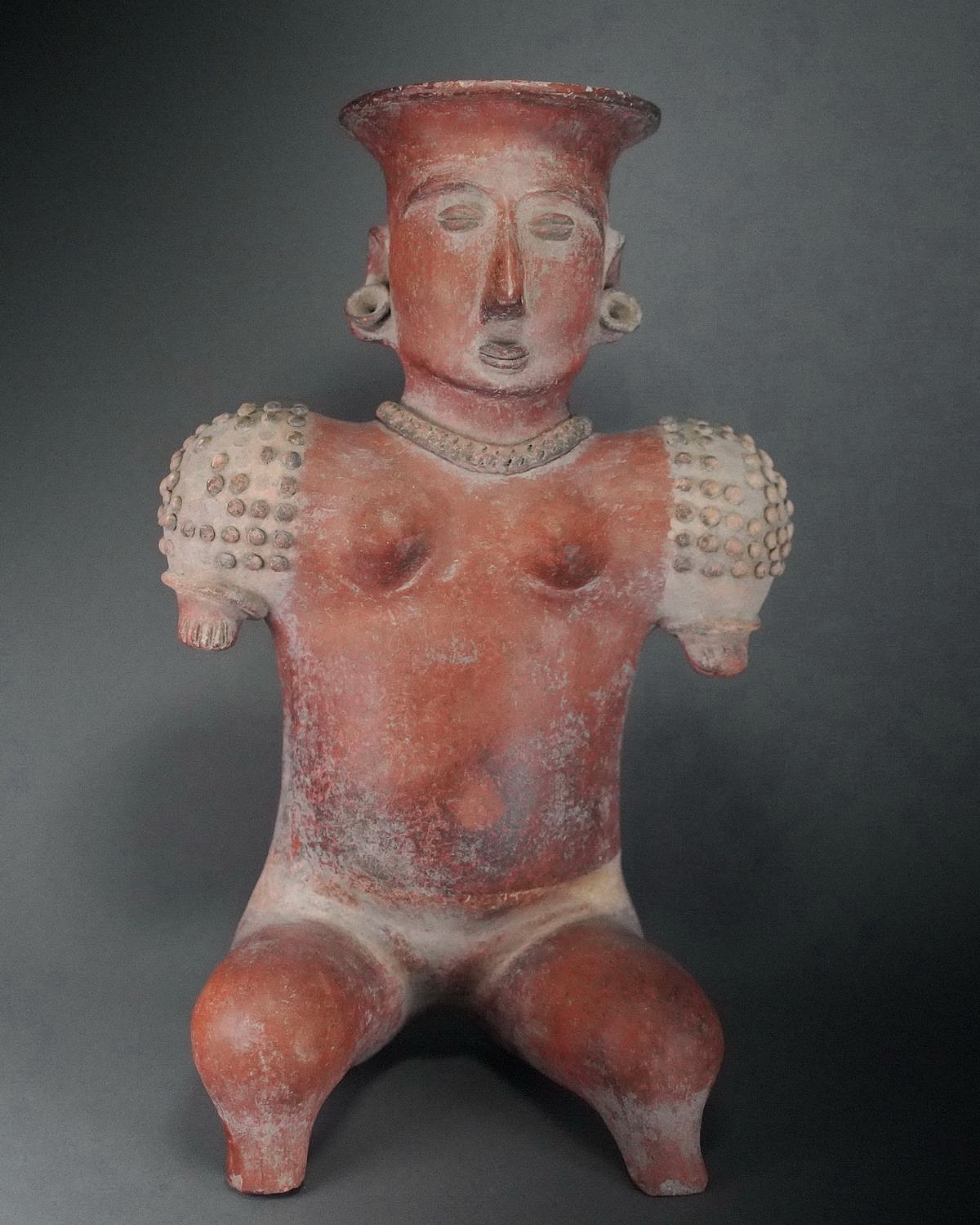




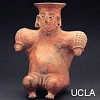

Mexico, Colima Seated Ceramic Sculpture of a Female
This seated female wears a necklace and earspools. She is adorned with shoulder pellets and has short arms that end with stubs in place of hands. The pellets may represent armor intended as protection for a person with short arms. Female figures in Pre-Columbia may have been linked to concepts of the earth and fertility and are thought to represent initiated women ready for marriage and childbirth. Usually, these figures appear to be disengaged from daily life. Similar style Coahuanyana Valley figures are in the collection of the Fowler Museum at UCLA, and The Arizona State Museum of Natural History. Ex-collection Hiroshi Miura, Tokyo, Japan acquired prior to 1970's.
Period: Mexico, Colima, Coahuanyana Valley, Classic Period, c. 100 BC - AD 400
Media: Ceramic
Dimensions: Height: 15.5"(38cm) x Width: 10"(22cm)
Price Upon Request
p1055
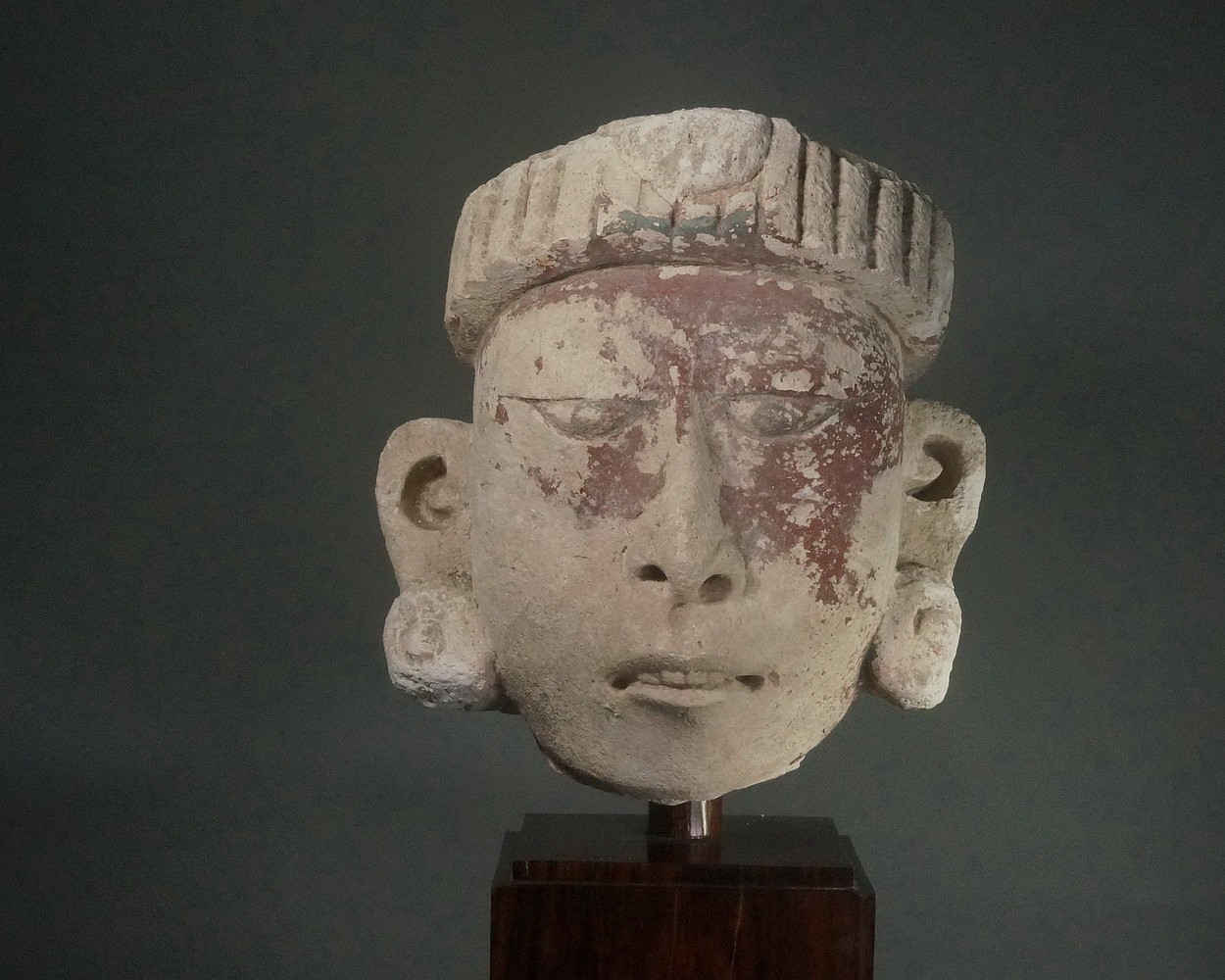





Mexico, Early Post-Classic Mayan Stucco Head Depicting a Priest
The priest’s eyes are looking down as if the head was placed high up on a wall.
Ex. collection Hana Gallery, Tokyo, prior to 1970.
Period: Mexico, Maya, c. AD 750 - 800
Media: Stone
Dimensions: Height: 10" x Width: 8 1/2" Depth 7 1/2"
Price Upon Request
n3045
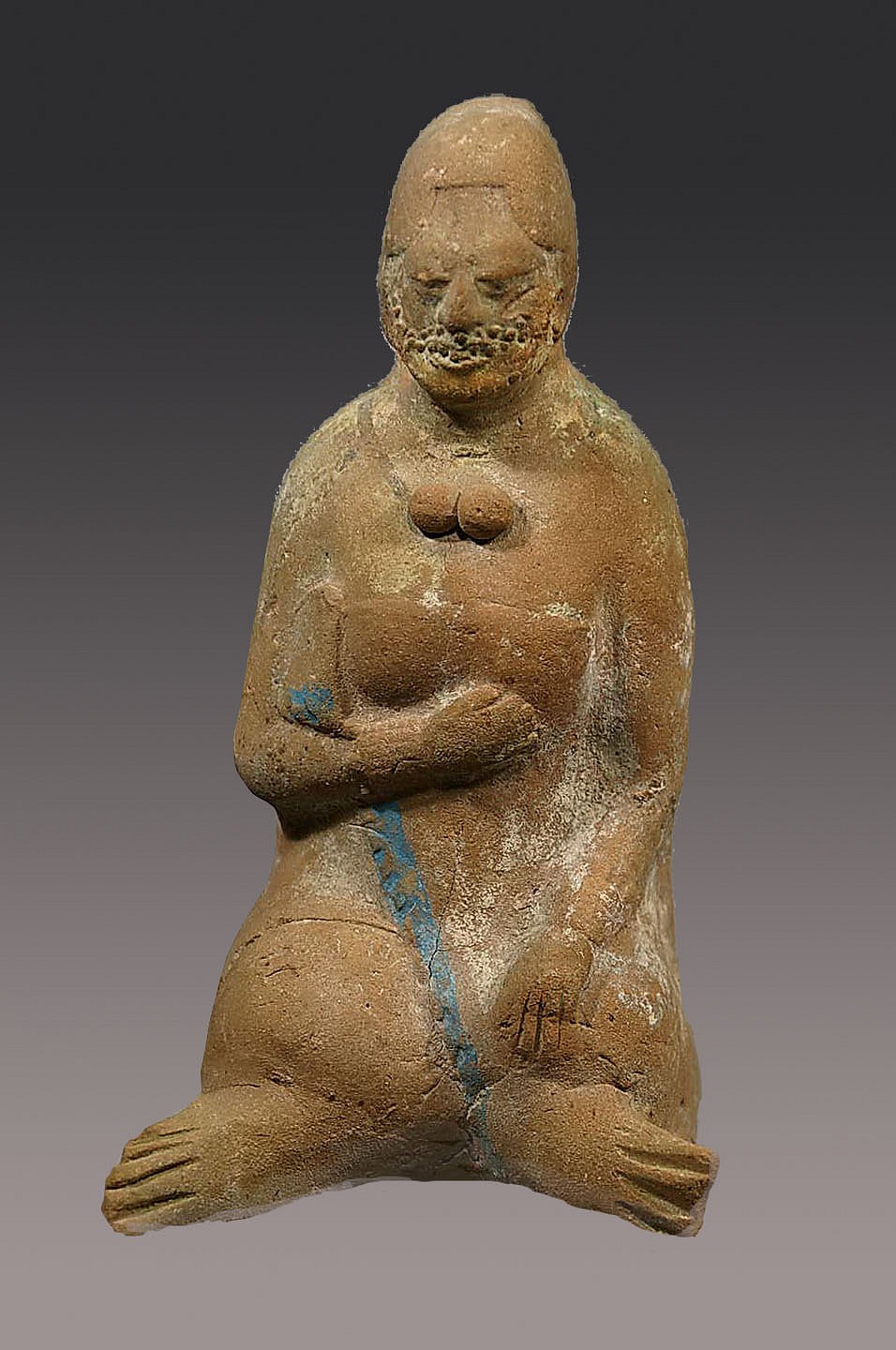



Mexico, Jaina Ceramic Efiigy Whistle of a Seated Woman
This cast ceramic whistle depicts a lady with a tattooed face, holding her hand to her breast. Post-fire blue pigment outlines the edge of her huipil, which was knotted on the upper right side of her chest.
Mold-cast figurines are thought to be later than solid hand modeled examples. Jaina Island, off the coast of Yucatan, was used as a cemetery for high-ranking nobles from the mainland.
Period: Mexico, Classic Maya, c. AD 400 - 800
Media: Ceramic
Dimensions: Height: 7"
Condition: With a minor chip on the right foot.
Price Upon Request
88167
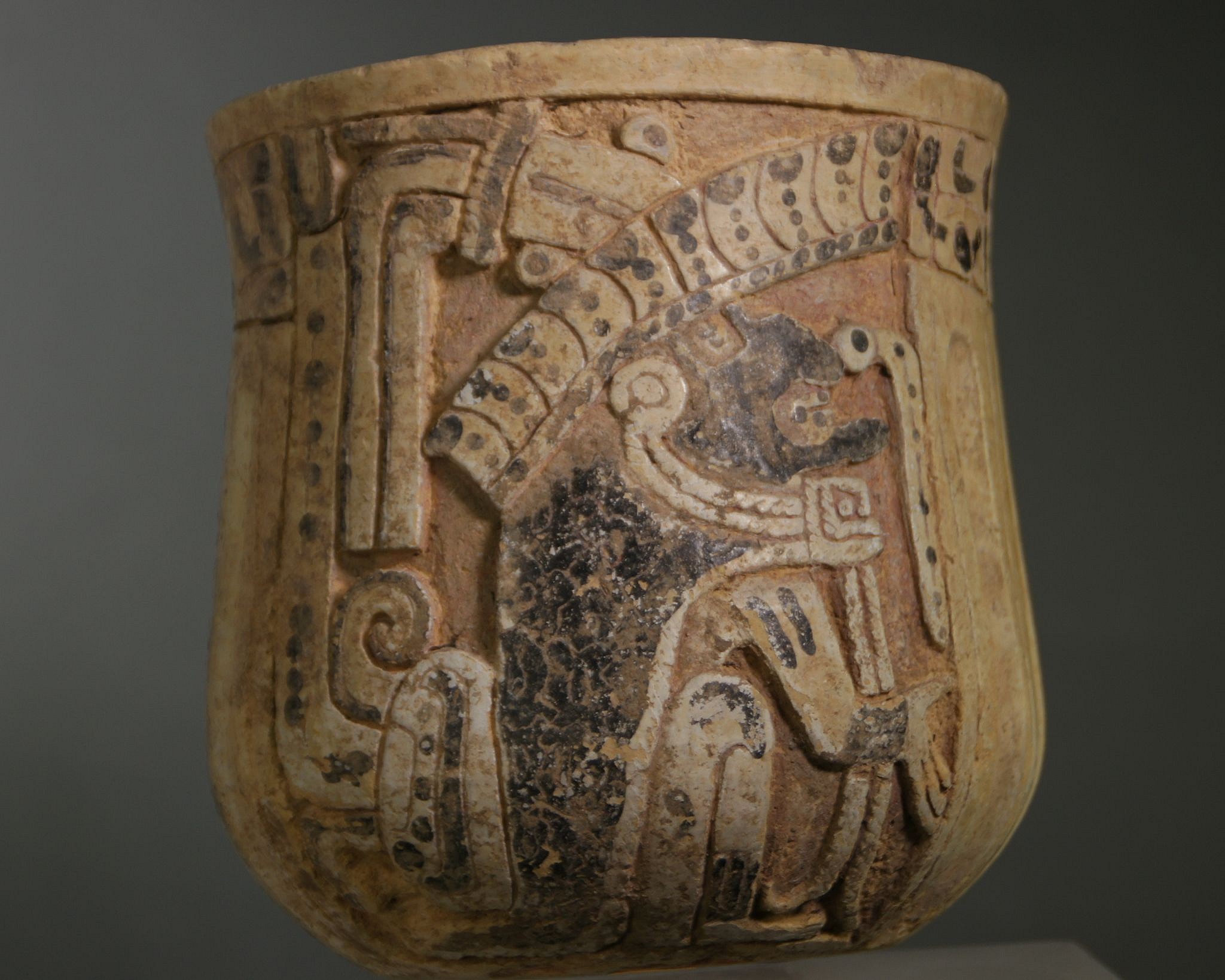





Mexico, Mayan Carved Fluted Vase Depicting God "L" in Relief
Mayan God "L" is the God of commerce, connected to both trade and the underworld. "L" is depicted crouching on a merchant's jaguar pelt bundle with areas painted in black squid ink. He is often depicted with square eyes and a big nose and wears a black cape, along with a broad-rimmed headdress with black tipped feathers. Formerly in the collection of Robert Sonin. Published in Justin Kerr's database at Mayavase.com: ref K6447.
Period: Mexico, Classic Maya, Northern Yucatan c. AD 400 - 800
Media: Ceramic
Dimensions: Height 5 1/8" X Diameter 4 3/4"
Price Upon Request
N6010
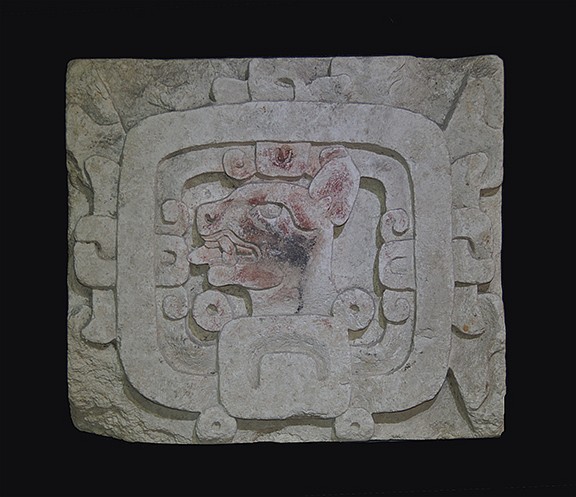



Mexico, Mayan Carved Limestone Relief of a Jaguar in Profile
This relief carved Mayan limestone tablet features a jaguar carved in profile with original red pigment, resembling a famous Mixtec stone stela with warriors wearing similar jaguar face masks. The tablet was exhibited in Tokyo in the Museum of Tobacco and Salt’s Animal Designs in Ancient America in February 2002 and was formerly in the collection of Hana Gallery in Tokyo prior to 1970.
Period: Mexico, Northern Veracruz, Toltec/Mixtec, circa AD.1000- 1200
Media: Stone
Dimensions: Height: 13 1/4" x Width: 15" Depth: 5 1/4"
Weight: 45 lbs
Price Upon Request
n3047
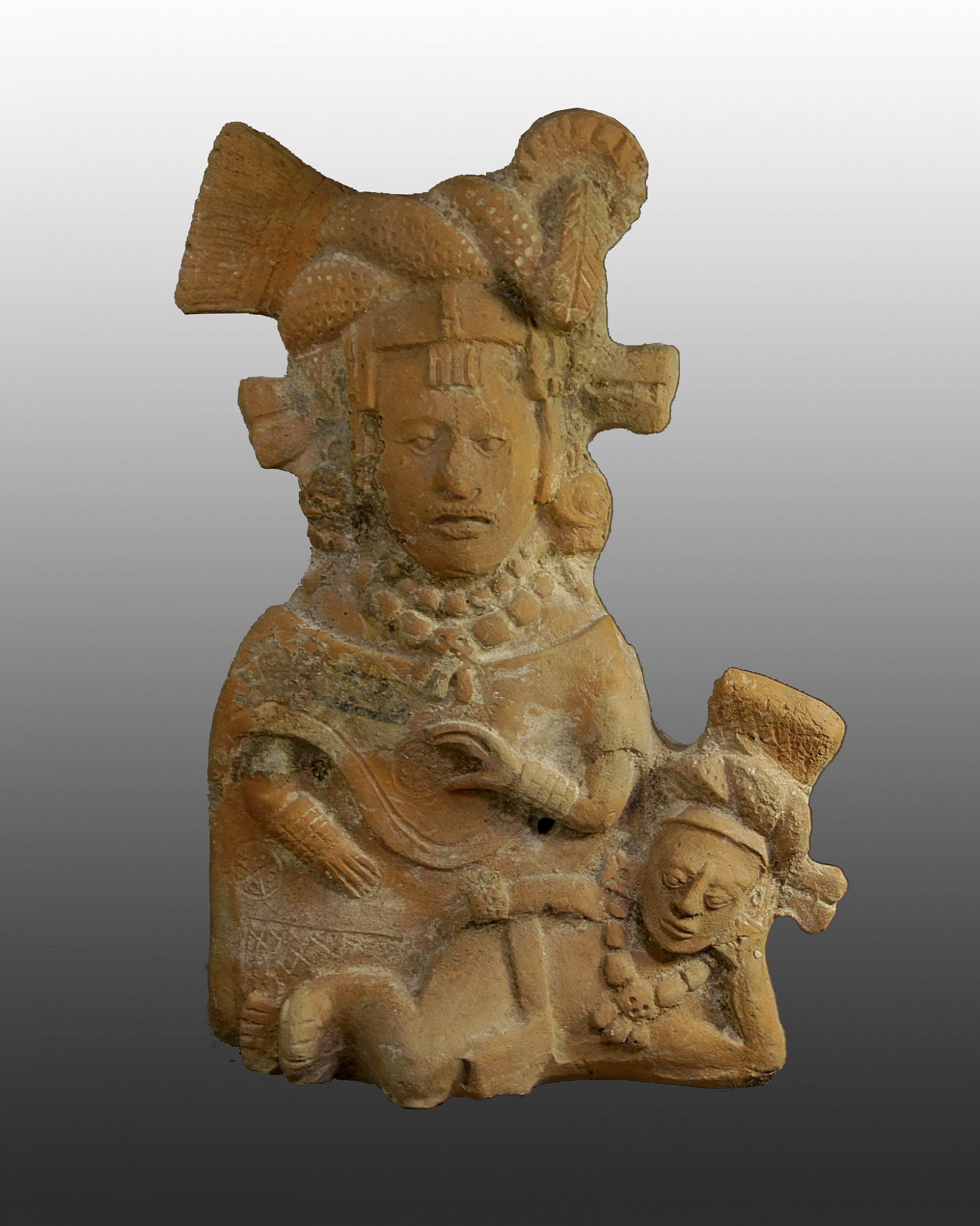





Mexico, Mayan Ceramic Figural Rattle of A Female Figure with Child
This high-ranking noble Jaina female wears a cloth and feather turban, ear spools, a heavy beaded collar piece and a slip-on quexquemitl over a skirt decorated with roundels and cross-hatching around the hem. Her face has a discreet scarification pattern in the center of the forehead and around the upper lip. The male child lying at her feet has a similar turban, beaded necklace, and a simple loincloth. Jaina-style figurines were exchanged along a 500 mile trade route. These figurines were hand-modeled with hollow, mold-made bodies, and joined to plain backs made by hand or molded. This figure can function as a whistle, flute, or rattle. For the Maya, enabling figurines to make sound animated them with the essence of life: air.
Period: Mexico, Jaina, Jaina Island, c. AD 400 - 700
Media: Ceramic
Dimensions: Height: 8 1/2"
Price Upon Request
N6011
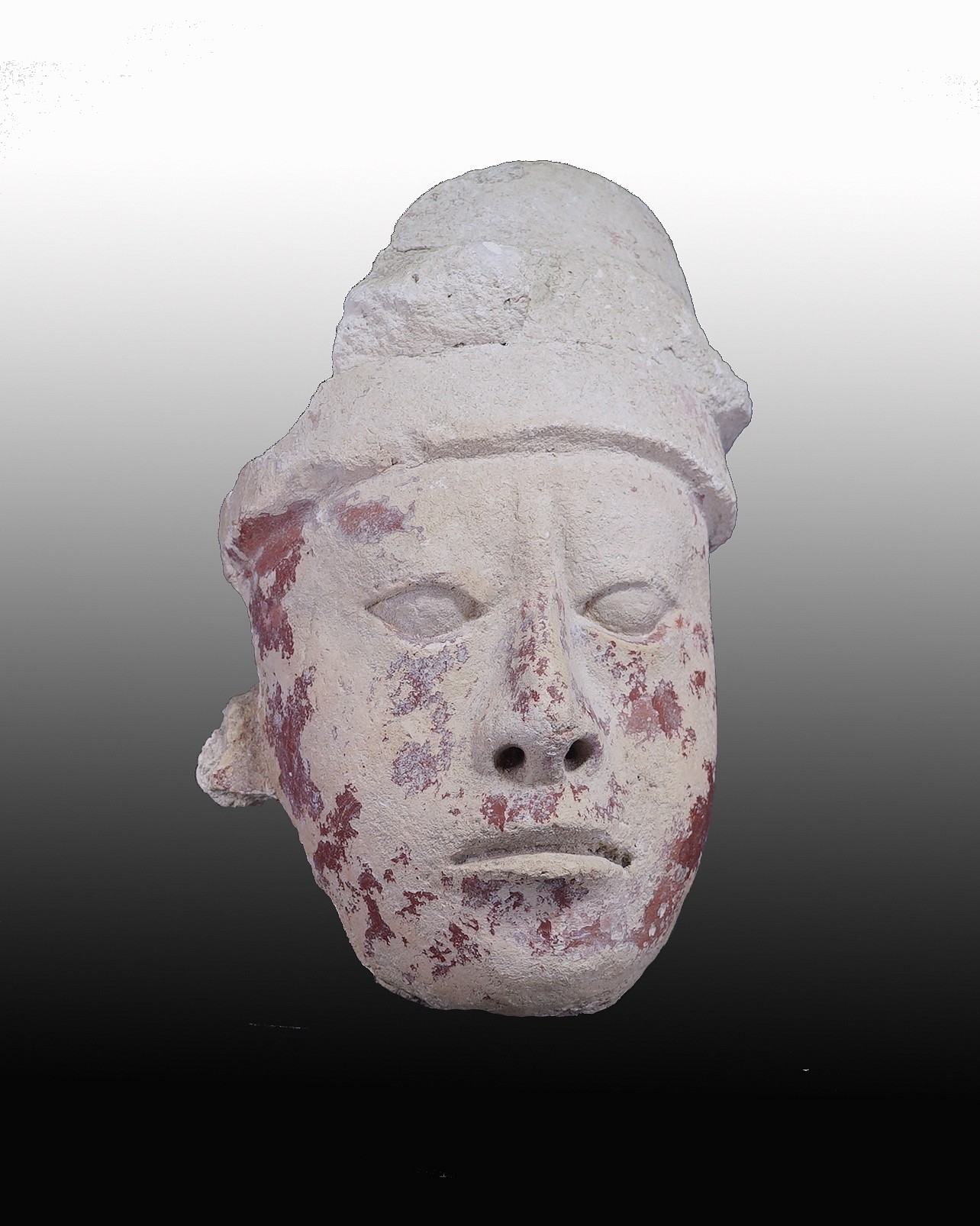



Mexico, Mayan Stucco Face of a Ruler
This Mayan ruler wears stone headdress and has carefully crafted facial features. It originates from Chiaps, Mexico, and was formerly in the collection of Hiroshi Miura in Tokyo, Japan, prior to 1970.
Period: Mexico, Mayan, Jaina, Late Classic, c. AD 550 - 950
Media: Stone
Dimensions: Height: 11 1/2 x Width: 7" Depth: 6 1/2"
Price Upon Request
n3046
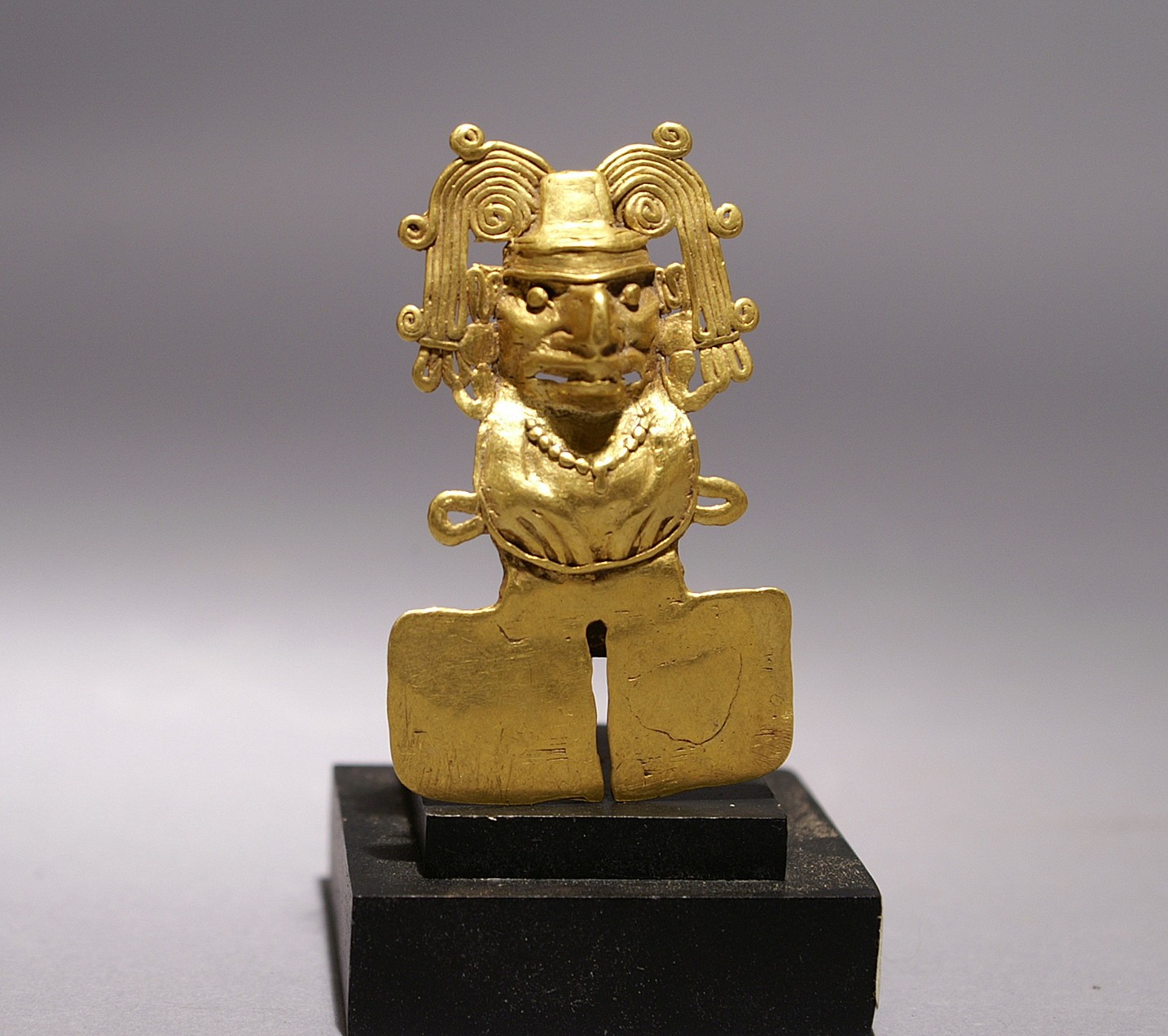


Mexico, Mixtec Gold Figural Pendant of Xochipilli with ornate headdress.
Superbly cast pendendt of Xochipilli, the price of flowers in the lost wax tradition. This is a particularly fine but small example of exqusit detail.
Period: Mexico, Mixtec, Oaxaca, circa AD000
Media: Metal
Dimensions: Height 2 1/4"
Price Upon Request
99307
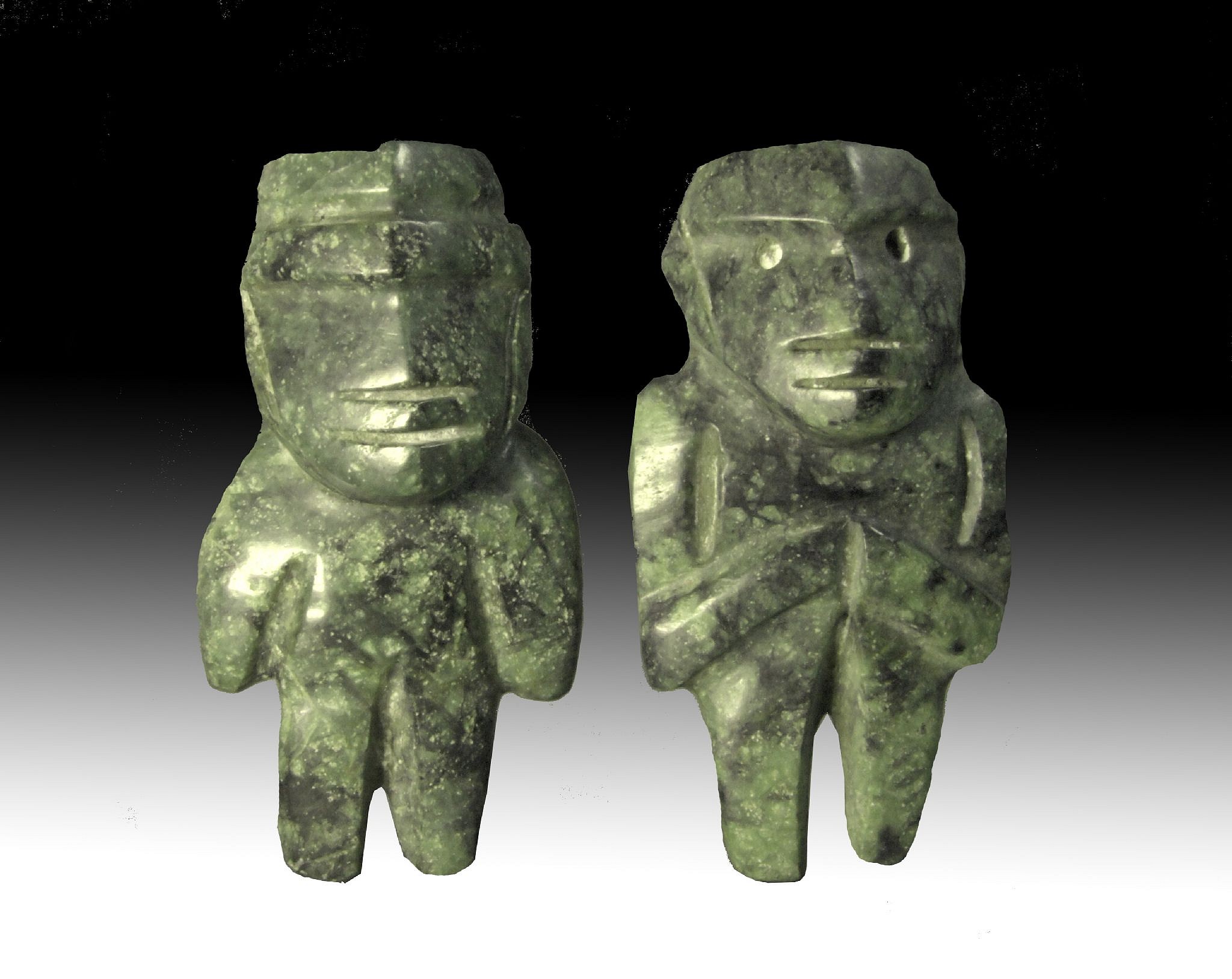








Mexico, Pair of Miniature Dark Green Jadite Mezcala Figures of the M16 Type
These miniature dark green jadite figures, male and female, bear serene facial expressions and body language. The figures were created using the string-sawing technique and are made of an extremely smooth and dark jadite native to South America, characterized by a network of deep green and blue-black veins. The figures have complex faces and arms that stand out in relief, which makes them category Type M16 Mezcalas. The representation of human figures played an important role in Mezcala culture, including in rituals and burial sites. Its rare to find a male and female made as a pair. For a reference see the Primitive Museum of Art's MEZCALA STONE SCULPTURE: THE HUMAN FIGURE, p.22-23, and MEZCALA: ANCIENT STONE SCULPTURE FROM GUERRERO MEXICO, by Carlo Gay and Frances Pratt, plate 61. Ex. Gallery Hana-Tokyo, prior to 1970.
Period: Mexico, Mezcala, Guerrero, c. 1200 - 300 BC
Media: Stone
Dimensions: H: 2.5 in. x W: 1.25"
Price Upon Request
n5058
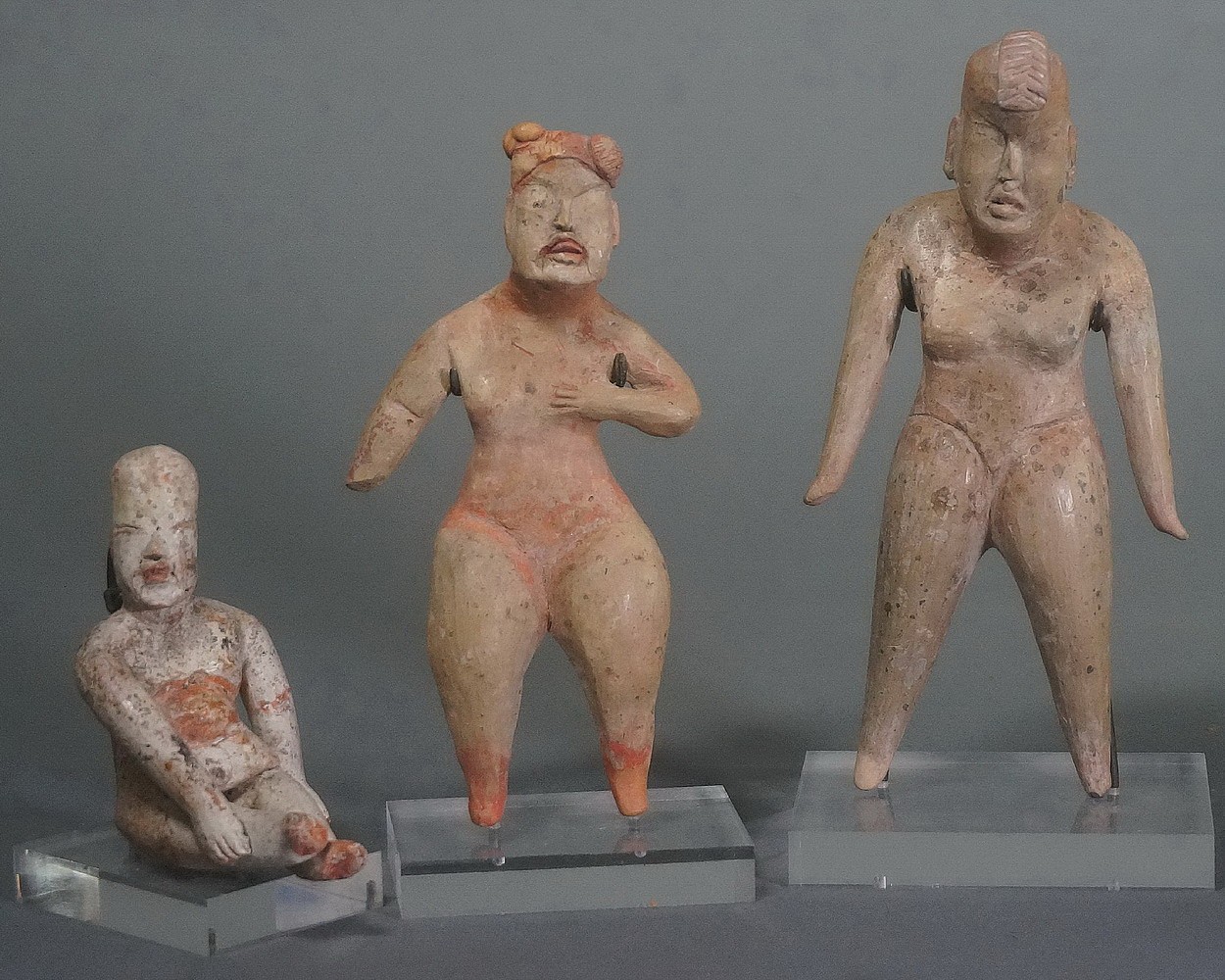






Mexico, Set of 3 Olmec Ceramic Figurines
These three figurines were exhibited together at Taguchi Fine Art in Tokyo and are illustrated in “JAGUAR'S CHILDREN: The Art of The Olmec,†May 7 - June 30, 2007. From left to right: seated cross-legged female with kaolin and cinnabar, standing eyeless female figure with traces of cinnabar, and standing figure with traces of kaolin slip.
Period: Mexico, Olmec, Las Bocas, Puebla c. 900 - 600B.C.
Media: Ceramic
Dimensions: Height: 6.9 cm, 12 cm, and 13 cm.
Price Upon Request
n7064
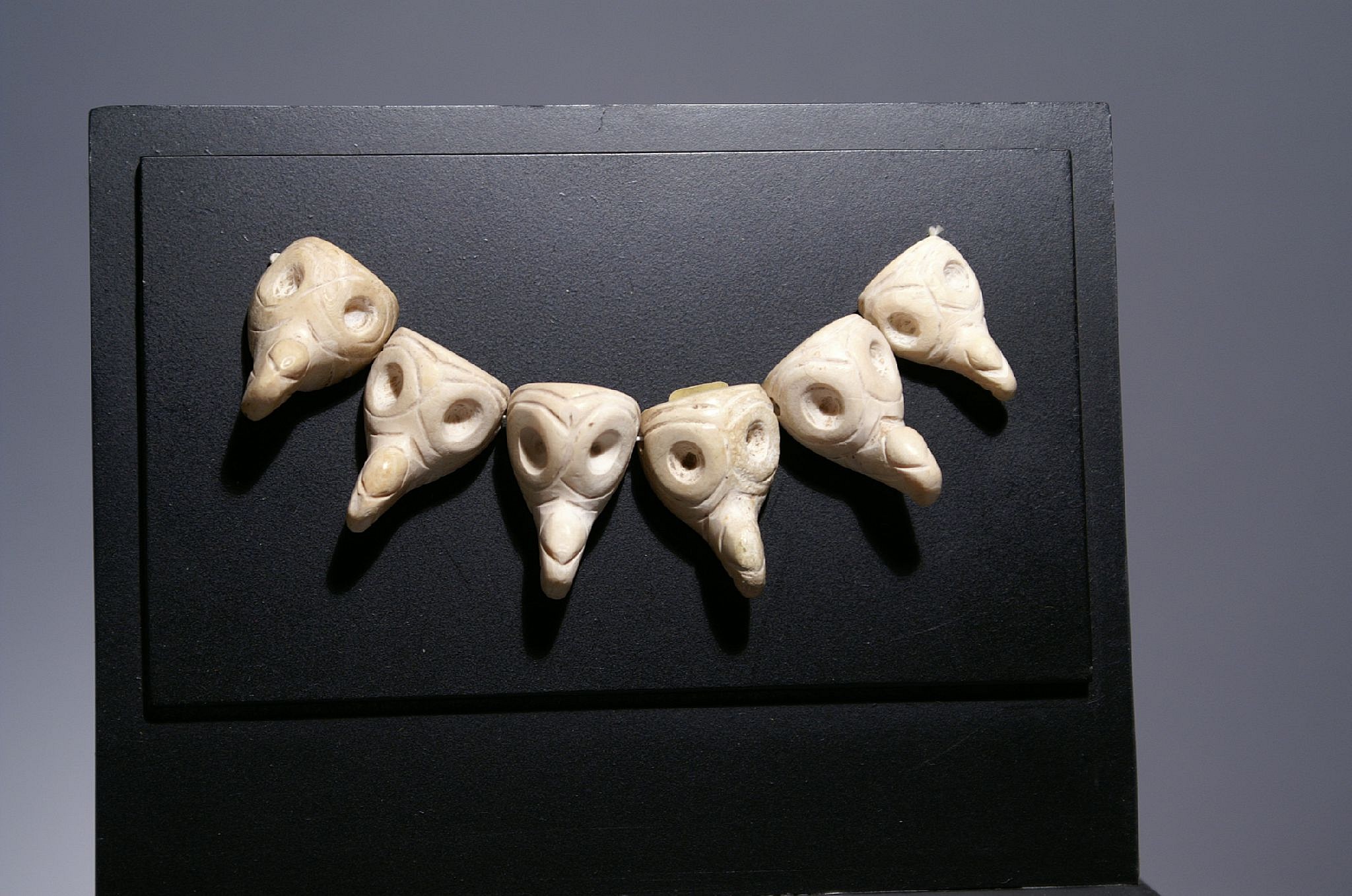


Mexico, Six Huastec Carved Shells in the Form of Condor Heads
These raptorial bird heads were clearly a part of the same original necklace. The bird may represent the condor, an endangered species in Mexico, or another powerful raptor that had mythological significance. Each shell head was drilled in the back with two conical drill holes. Colorado collector prior to 1997.
Period: Mexico, Huastec, Veracruz, c. AD 900 - 1500
Media: Shell
Dimensions: Length 4 1/2" Each head Length: 1"
Price Upon Request
97162





